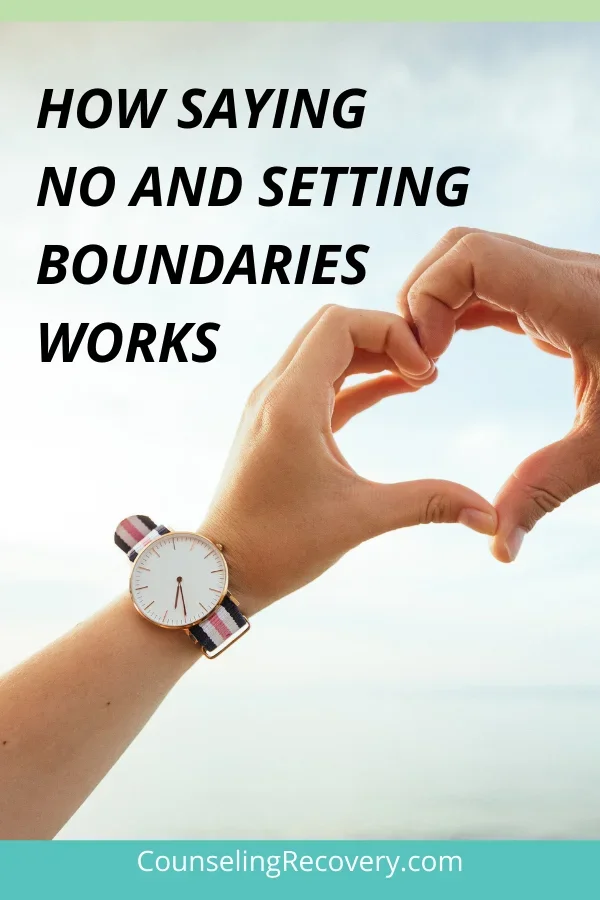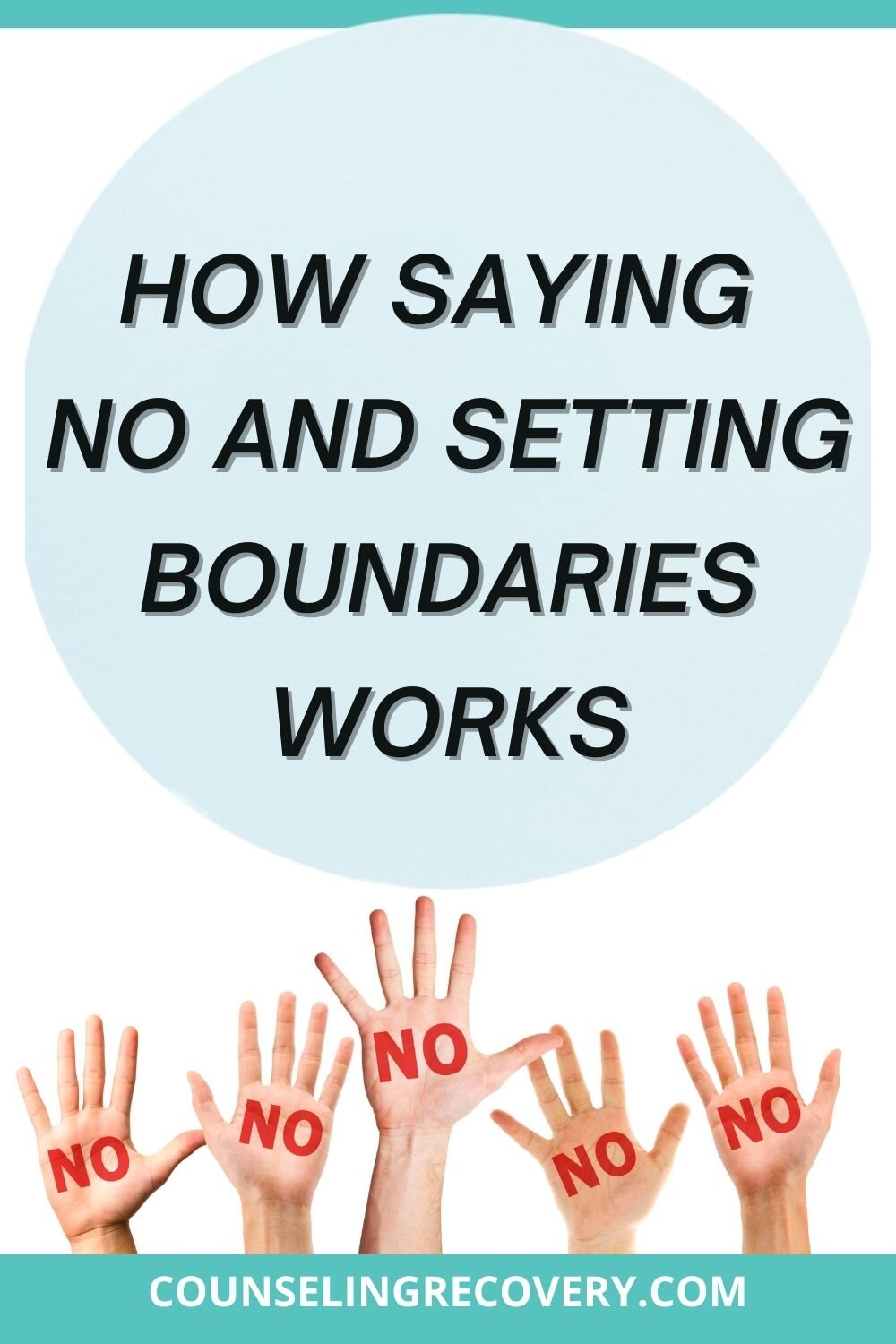How SayIng No and Setting Boundaries Works
How Saying No and Setting Boundaries Works
Saying no gets a bad rap. Maybe a co-worker wants a favor or a family member asks for a loan. You say yes because sometimes, it’s easier to “be nice” and keep the peace. What if you’d rather say no but you feel like you can’t? You don’t want the hassle so you do it anyway. That can create more problems.
Something has to change, but you’re not sure where to start. In this article, learn my best tips around setting boundaries and saying no, you can actually improve the closeness of your relationships.
What are healthy boundaries?
Boundaries are the limits you set for yourself that determine what you participate in and when to remove yourself. They dictate your choices. They are not about getting someone else to change their behavior.
Why Not Saying No and Setting Boundaries Hurts
We all have a limited amount of time and energy to give. By not setting healthy boundaries, we avoid speaking our truth. This hurts our relationships because when you can’t be honest, relationships become less intimate.
When you give too much, you start to feel like your needs don’t matter. Maybe others don’t reciprocate and you’re getting frustrated. By not speaking your truth, resentment begins, and then you feel even more alone.
Resentments fester until they are addressed. Staying silent creates a bigger wedge because if nothing changes, you might not want to be around the person anymore. The relationship starts to suffer.
Saying no is an important boundary because it gives you control of your time and energy.
It’s not possible to feel close to someone when you can’t be open about what you need. Intimacy stems from authenticity, not pretending.
Saying No Is Self-Care — Not Selfish
Saying no isn’t selfish or inconsiderate. When self-care gets ignored, your stress will likely increase. The American Institute of Stress identifies common physical signs of stress that include headaches, stomach pains, and digestive issues. By not advocating for yourself, you might be making yourself sick!
Self-care means taking care of yourself without delay and that requires some effort!
Address the Fear of Saying No and Setting Boundaries
Fear usually plays a part when you don’t want to say no. Addressing the fear will help you to move past it. 12-step programs have a great acronym FEAR that stands for: False Evidence Appearing Real. Basically, it means that what we fear rarely happens.
When you think about these fears, ask what is your worst fear about saying no? For example, do you think they’ll get mad at you and leave? Do you think they will think that you’re being selfish?
Once you can name that fear, ask yourself: how likely is it that going to happen? And if it did happen, what does that say about the person you’re involved with? Speaking up about your needs shouldn’t be a negative thing.
Some people don’t like it when we begin setting boundaries and saying no, but they will likely come to respect you for it. If they can’t accept you saying no, it may be time to reconsider the relationship. Everyone has the right to opt-out when something doesn’t work for them.
By not setting healthy boundaries, we teach people how to treat us. Without boundaries, relationships become unhealthy. When one person gives more than the other, those relationships become obligations, and border on codependent.
When Setting Boundaries Change Your Self-talk!
When setting boundaries, consider how you talk to yourself. is your internal conversion or “self-talk” telling you that others will be mad if you say no?
Assuming the worst is false evidence appearing real. Instead, change that “self-talk” into more realistic, hopeful messages. Things like, “You can do this,” or “It’s okay to have needs.” These are comments you say to yourself to keep a positive attitude.
Practice Setting Boundaries and Saying No
Without healthy boundaries, anyone can become a doormat. Start by practicing with the person you feel safest with, like a best friend. Say “no” to something small like going to a particular restaurant or movie, when you don’t want to go.
Starting with the little things that don’t matter that much will be less scary and help to build your confidence.
Here are some other boundary options:
Spend less time on something that you don’t want to be doing.
Make a situation more convenient for you.
Don’t volunteer the next time someone needs help.
Be quiet and let someone else step up.
By rushing in to help people, we inadvertently prevent others from doing their part. When this becomes a pattern, other people start to assume that you will always be the one to help but that isn’t healthy. This becomes the roots of codependency.
Sometimes stepping back and doing nothing is the best way to take care of ourselves.
The Benefits of Saying No
The people who really care about you will support you in taking care of yourself. If they don’t, pay attention. If someone else’s needs frequently overshadow yours, that’s a major red flag. Healthy relationships should benefit both people, not just one person.
When others continue to disregard your saying no, then it may be time to lower your expectations or even to reconsider the depth of the relationship.
Final Thoughts
Setting boundaries and saying no may feel uncomfortable at first but with time these boundaries can become the new normal. Always start small to gain confidence. The most surprising lesson about saying no is that most people will accept it. People who love you WANT you to take care of yourself!
Saying no gives you the chance to be yourself without apology and that is priceless.


